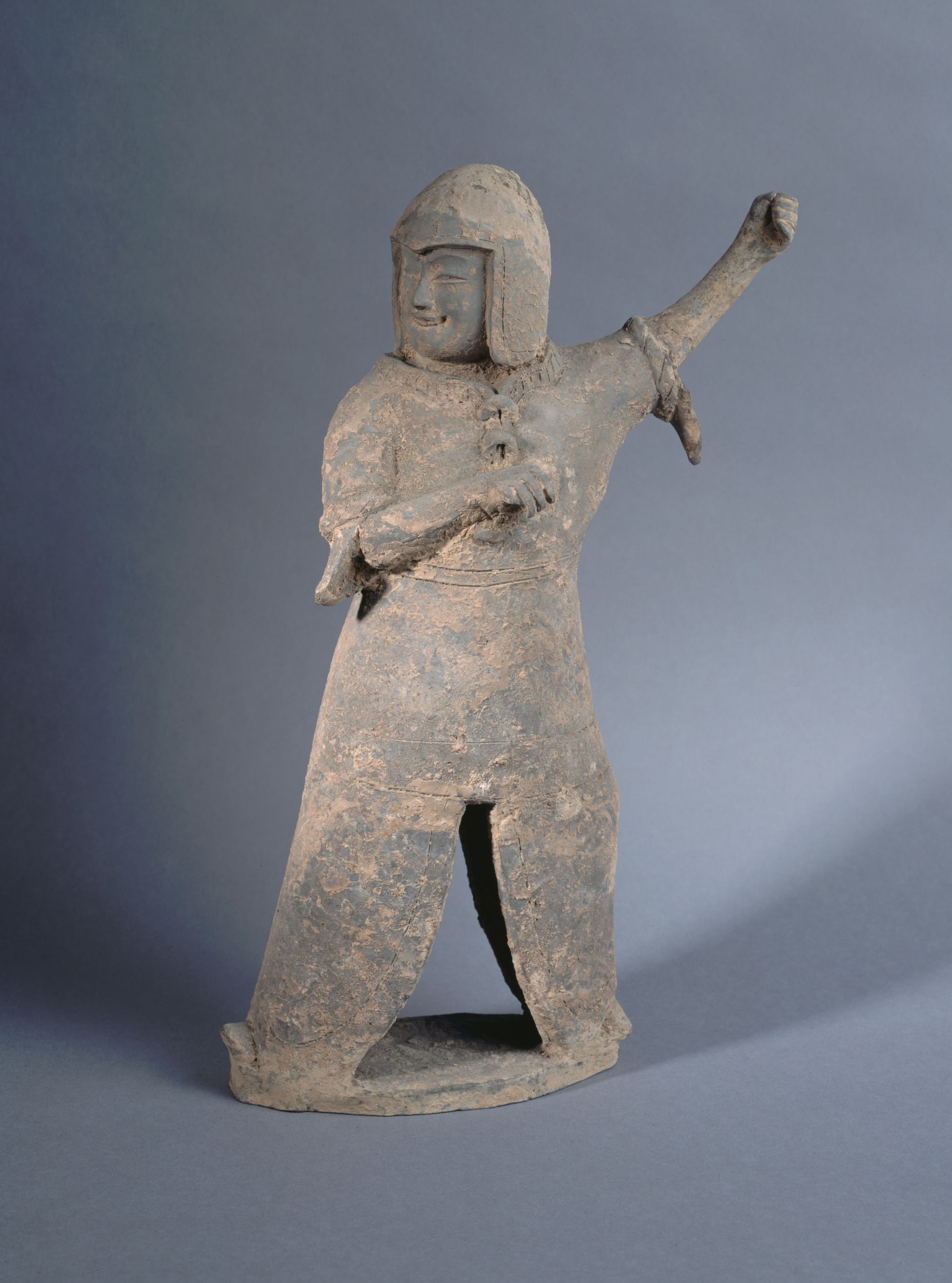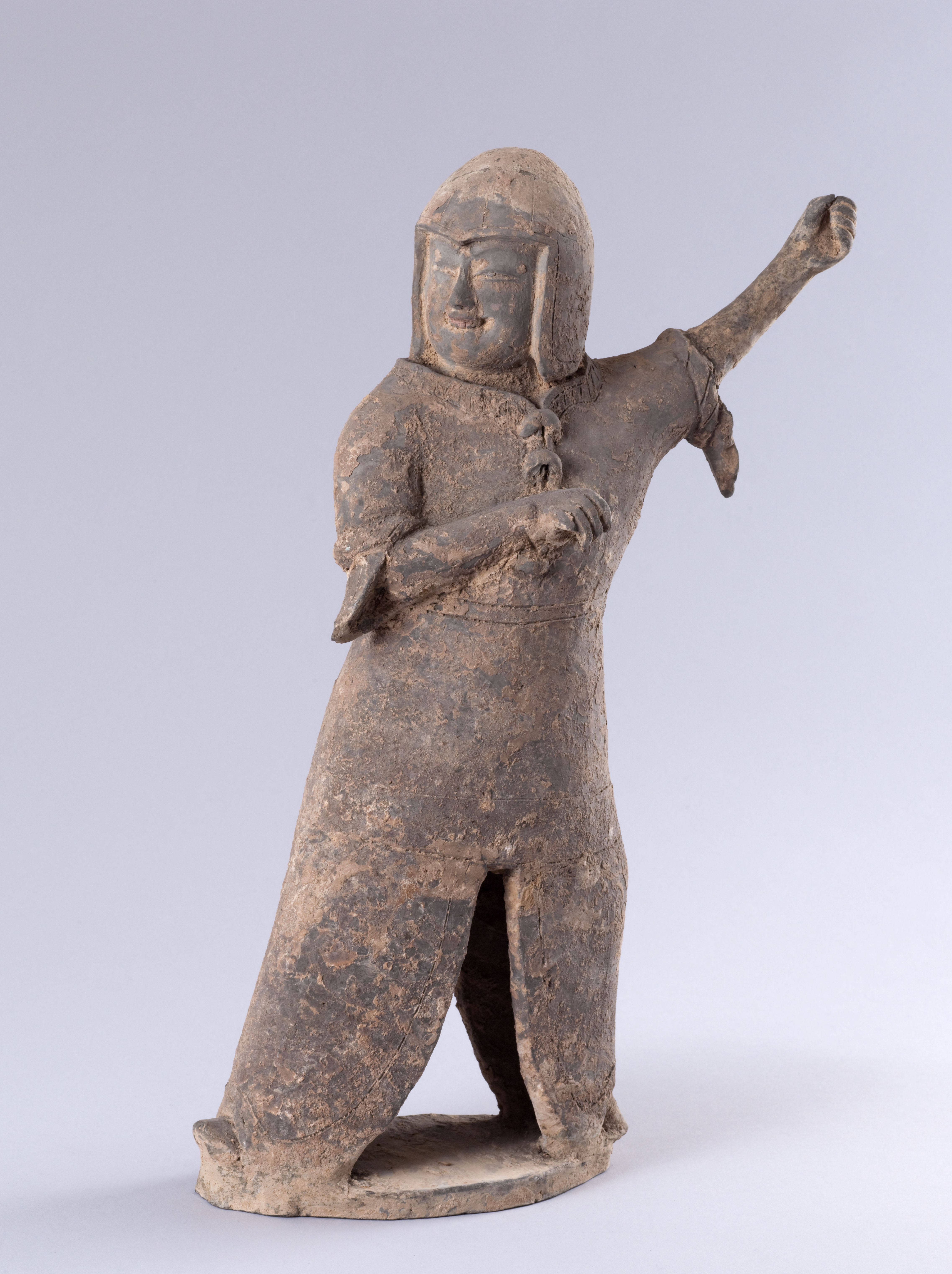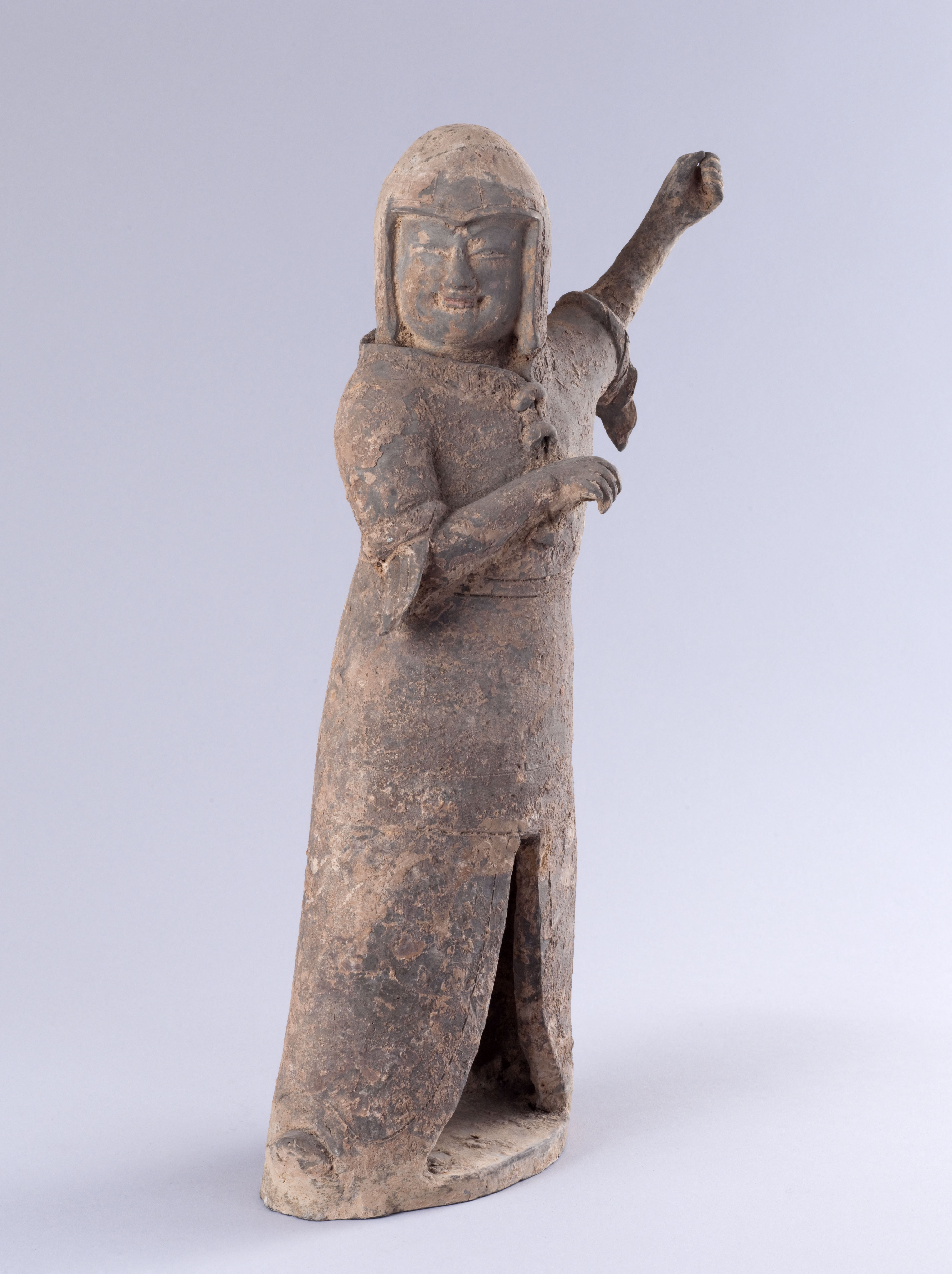
Gardien de tombe
Terre cuite, Moulage
Statuette, Mingqi
Don manuel : Société des Amis du musée Cernuschi
M.C. 7600
In the Eastern Han (25-220) period, among other statuettes placed in the tombs, a warrior, with raised arm holding a spear made of a perishable material, performs a ritual of exorcism to protect the dwelling of the corporeal soul (po) from malefic influences. In the Western Jin period (265-316), his face wore a terrifying expression, perhaps that of a mask donned for the ceremony.
This protective figure, in association with a spiked-back monster, would gradually gain in stature. The tomb guardian (zhenmuyong) would double up as a military and public official. Two fabulous “tomb guardian beasts” (zhenmushou) would accompany them. In the Northern Qi (557-577) period, a group of six statuettes would be placed at the entrance of the tomb: two military figures, two civil functionaries and two tomb guardian creatures considered as earthly spirits. From the Sui dynasty (581-618), the four officials were assimilated to the Buddhist four guardians of the continents (Sanskrit lokapāla), seen as four guardians of the cardinal directions (fangxiang) or four heavenly guardians (tianwang).
The Cernuschi Museum statuette is an exceptional specimen of the wares produced in the 3rd and 4th centuries. The stylised caricature of the Jin period exorcists has given way to a more naturalistic face lit up with a benevolent smile. The armour leaves the arms free. The lower part of the garment has wide flaps protecting the trousers.
Gilles Béguin, Le petit peuple des tombes, Paris Musées, 2010, p.43.

